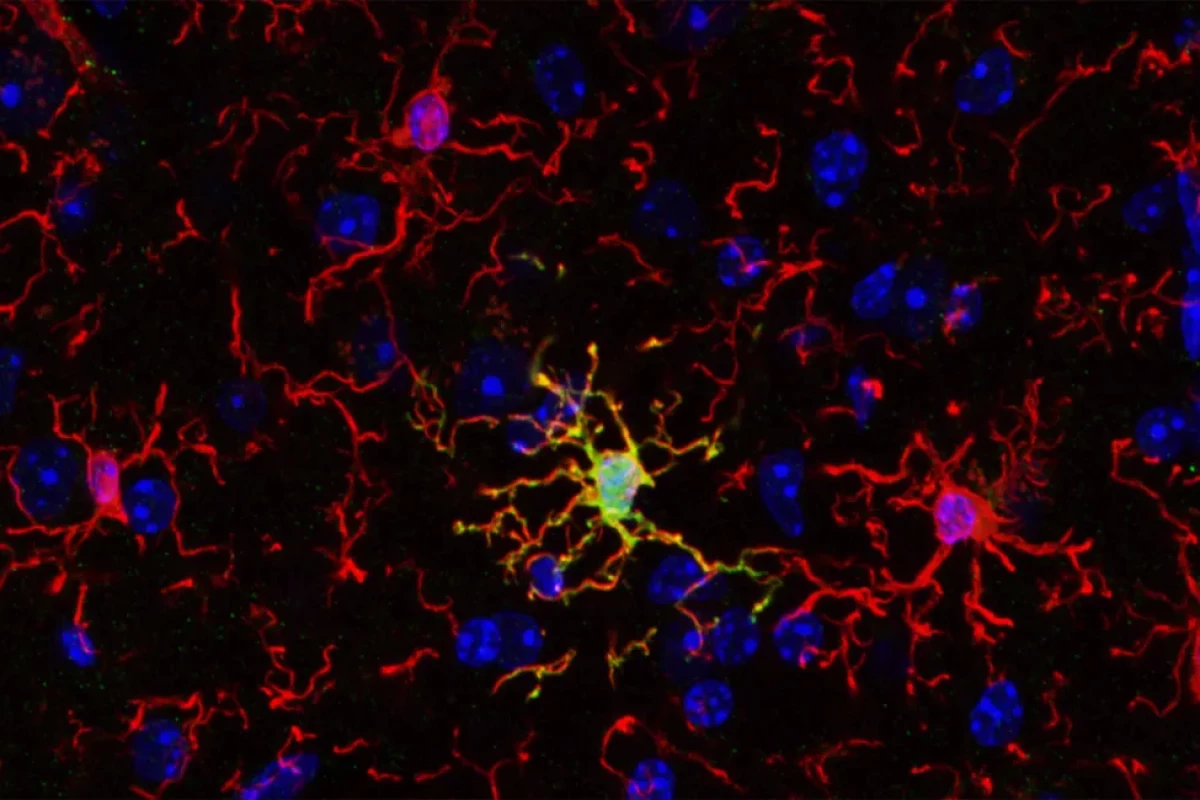A new study has discovered the important role that a subset of microglia, the brain’s immune cells, plays in early brain development, cognition and memory. The finding gives us a better understanding of how these cells work and could pave the way for new treatments for neurodegenerative conditions like Alzheimer’s disease.
Microglia are the most prominent immune cells of the central nervous system, accounting for about 10% of the cells in the brain. They’re the first cells to respond when something goes wrong such as infection or inflammation.
In a healthy brain, microglia are extremely dynamic, constantly moving around the brain to check on its functional tissues (parenchyma). They regulate brain development, help maintain neuronal networks and repair injuries. But dysfunctional microglia have been associated with brain diseases, ranging from neurodegenerative disorders like Alzheimer’s disease to brain tumors.
A team led by researchers from the University of Helsinki, Finland, in collaboration with Sweden’s Karolinska Institutet and the University of Seville, Spain, has taken a closer look at the microglia of mice and discovered that not all microglia perform the same functions.
“Cognition and memory are crucial components of what makes us human, and microglia are necessary for proper brain development and function,” said Vassilis Stratoulias, lead author of the study. “Cognitive decline is a common feature of neurodegenerative and psychiatric conditions like Alzheimer’s and Parkinson’s disease, schizophrenia and depression.”
The team already understood the important role of microglia in brain diseases but wanted to further that understanding by analyzing the cells on a molecular level.
“Microglia are involved in virtually all brain pathologies, making them prime candidates for novel drug targets and innovative therapeutic approaches,” said Mikko Airavaara, one of the study’s co-authors. “Understanding the fundamental biology of these cells will be the way to produce new directions for drug development to treat currently untreatable diseases of the brain.”
Using advanced imaging techniques, the researchers studied the brains of mice and found a subset of microglial cells called ARG1+ microglia that express the enzyme arginase-1 (ARG1). ARG1+ microglia were found in large numbers during early development and less so in adult mice, leading the researchers to conclude that they were critical to brain development and the shaping of neuronal pathways.
The researchers noted that the shape of ARG1+ microglia was not noticeably different to microglia that don’t express ARG1, which, they say, explains why ARG1+ microglia haven’t been studied before. Despite their identical outward appearances, when the researchers compared RNA profiles between ARG1+ and ARG-negative microglia, they found significant differences at a molecular level.
Importantly, they found that the ARG1+ microglia were found in specific areas of the brain, primarily in the basal forebrain, a region connected by neurons to the hippocampus, which plays a major role in learning and memory. Mice lacking the ARG1 enzyme were less willing to explore new environments, which the researchers say indicates cognitive defects.
When the researchers knocked out the ARG1 gene in the mice, they noticed an interesting sex-based difference. There was a substantial impairment in long-term memory in female mice lacking ARG1+ microglia that was not seen in males. This finding is consistent with what’s been observed in humans: women are twice as likely to develop Alzheimer’s disease than men.
While microglia, generally, have emerged in recent years as key to the development of Alzheimer’s disease, further research is needed before a link can be made between the disease and ARG1+ microglia. Regardless, this study’s findings provide a greater understanding of the mechanisms underlying neurodegenerative diseases and brain diseases in general and open to door to the development of novel therapies.
“In addition to offering better understanding of brain development and the contribution of microglial diversity to that, the study could provide new clues about how to manage neurodevelopmental disorders or neurodegenerative disorders presenting a cognitive component and often differences between males and females,” said Bertrand Joseph, a corresponding author of the study.
The study was published in the journal Nature Neuroscience.
Source: University of Helsinki





